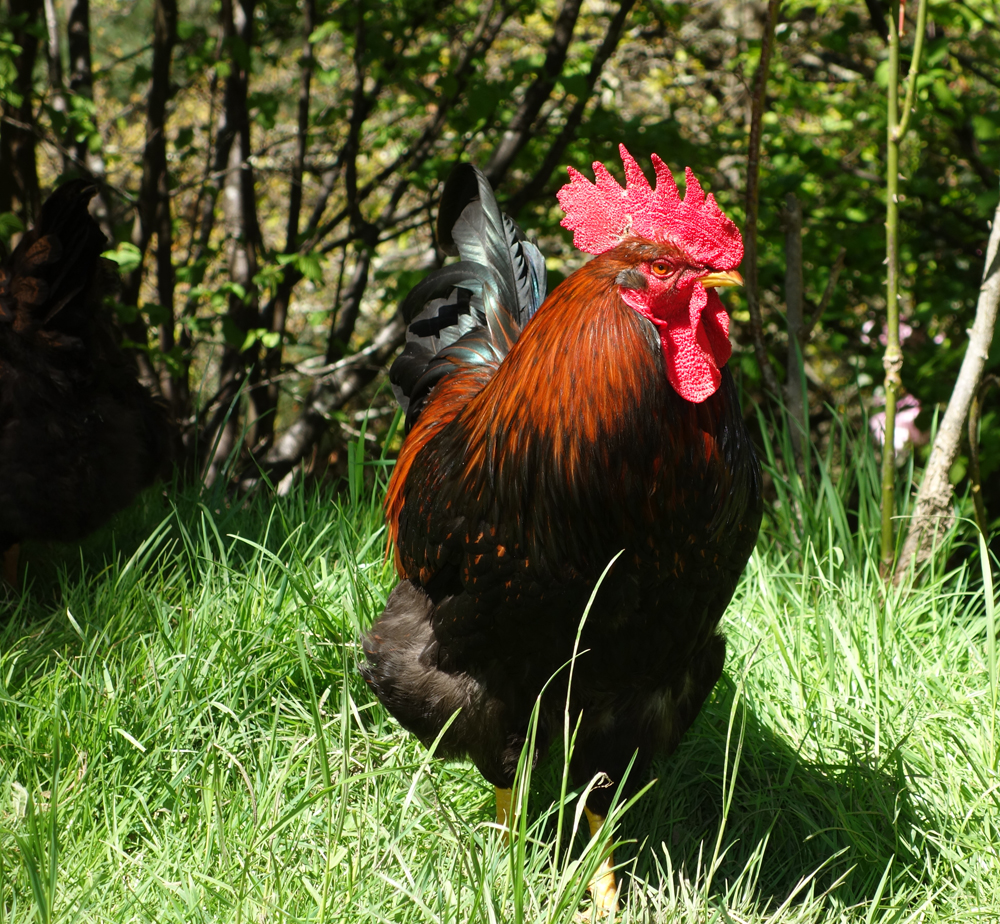Last weekend we held our first chicken husbandry and slaughtering workshop. This resulted as a lot of the people who get eggs from us ask us what they can do with the cockerels they hatch. For health reasons we don’t offer to take them back. Plus it’s ideological. If one is going to hatch eggs we feel one should be prepared for the inevitable results of that hatching i.e. there will be some blokes. Pretty much guaranteed really. Too many people abandon cockerels by the side of the road here. It’s really sad and there is no excuse for abandoning any animal one is responsible for. My first advice to people asking what they can do with their unwanted cockerels is always that they should eat them. Honestly they will be the best chicken you have ever eaten. This elicits two types of response. One is “I don’t know how to kill them” and the other is “I could never do that”. For the latter we offer a couple of suggestions. The Raptor and Wildlife Refuge of Tasmania does accept live roosters. You can find more information here. You can also contact Bonorong Wildlife Sanctuary. They have some devils and may be interested in taking cockerels. Any place that has captive devils may be interested in taking cockerels. For the former we ran this workshop.
The very frosty cold day kicked off with a tour of the farm during which we explained our husbandry practices. We talked about how to house your chooks, discussed how and how much to feed them, and discovered how to make sure they are well and happy. But soon the moment of truth was upon us and participants had to chop off their first chook head. There was some trepidation, mostly people wanted to make sure they weren’t going to cause the chook any suffering. Facing such existential realities as death can be confronting. It is especially so in our society, which is living in denial of death. But in the end everyone got their chook’s head off very quickly and efficiently.
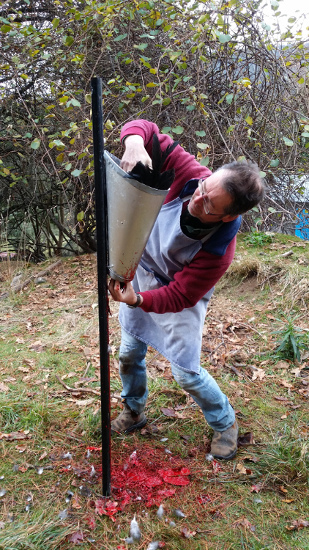
Soon we were in the midst of a giant pile of feathers as everyone plucked their chook. It was awesome to see everyone pitching in and helping each other pluck their chooks.
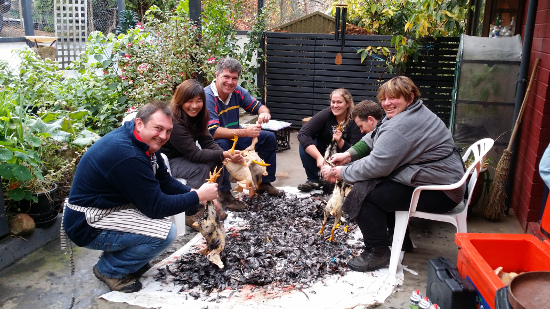
Once all chooks were plucked it was over to the big table for instruction in gutting. We explained the process in brief, then demonstrated on one bird: remove the feet, the crop, the neck, then slit across the underside below the vent, reach up inside and pull the innards out, then finally cut around the vent, and you’re done. After that, everyone started on their own chooks. Some attendees were faster, some slower, but everyone got the job done well. Reactions to the various sensual assaults varied, “Wow, it’s still really warm inside this bird”, “I’m nervous about using too much pressure when pulling the guts out in case I rupture an intestine or something” — “It’s OK, you need more force than you think you want to apply, but then suddenly it all just works smoothly”, “I’ve done this before, but your method of cutting around the vent is easier that I used to do”, “Is this meant to smell like this?”.
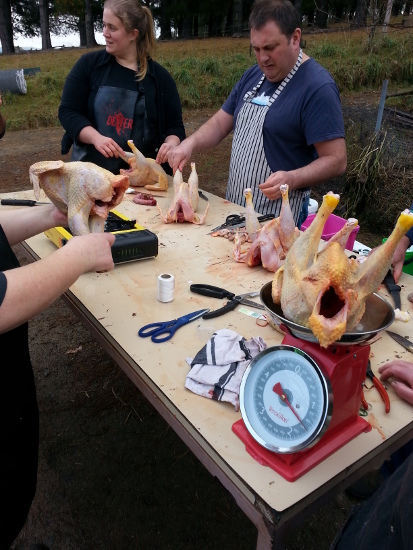
As we sat around the fire and ate chickeny dishes there was much discussion of farm life in Tasmania. It was interesting to hear the diverse perspectives on raising one’s own food, both animal and vegetable. Some themes were agreed on by all, the satisfaction of producing one’s own foods, the strange priorities of government, the need for awareness of animal rearing practices, and the desirability of sustainable systems.
We had more people wanting to do the workshop than we could accommodate so we have decided to do another one on the 3rd of July. Please email me to book.
Tag Archives: Chooks
Hatching Eggs – The Broody Hen
So you have decided to hatch some chicken eggs and keep chooks. Whether you are doing it for purely utilitarian reasons, educational reasons or because you have a terrible chicken addiction (I may possibly fall into this last category) there are a few important basics to get your head around.
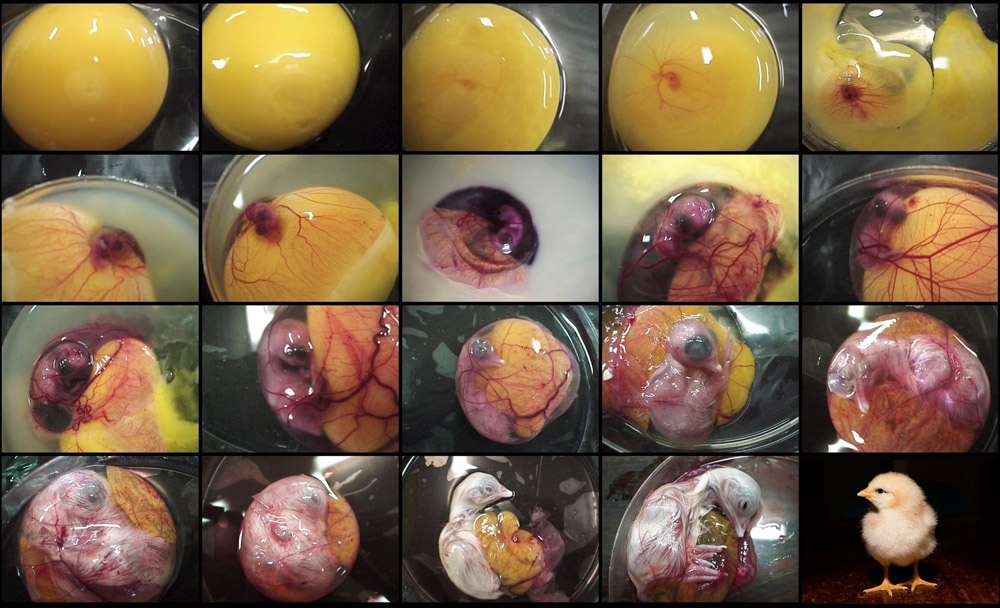
To hatch eggs you are going to need either a reliable broody hen or an incubator. Sadly Barnevelders, despite being the best chickens in the world from every other perspective, do have the slight failing that they do not have a great propensity for sitting. Consequently I hatch most of my eggs in incubators, although I am trying to breed some mothering back into my trusty Barnies. If your hens are not good sitters you can get in a hen or hens for the purpose of sitting otherwise it’s incubators. The very silly looking Silkie chickens are excellent sitters, but their extremely docile nature can mean they get bullied by other birds.
There is no way to make a hen go broody. Locking her in a box with eggs will not make her sit. Don’t do this. However if a hen is broody when you don’t want her to be you can put her in a cage with the wire side under her and hang it up. Because she can’t make it warm underneath her she will give up after two or three days.
One of the most common questions I am asked is how one knows if a hen is really sitting or if she will give up. The truth is one never really knows, though if a hen has successfully sat before she is more likely to stay sitting. Once the hen has been sitting for three days she might be broody. Put your hand near her head and see how she reacts. She may make a low trilling noise as your hand approaches or she may peck you. If she does both of these things then she may well be serious.
Don’t worry if she is sitting on eggs that are not the ones you want to hatch. Once you have ascertained that she is serious you can easily swap these eggs for the ones you want her to incubate. The best time to swap eggs is at night. Chickens’ brains go into neutral in the dark so they are much less likely to react to your actions at night. To swap eggs first make sure the eggs you are going to put in are not freezing cold. Is she is serious she will have pulled feathers out of her breast to make a bare patch so that the eggs have good contact with her skin to keep warm. She may well reject cold eggs, pushing them off the nest.
A sitting hen needs a nice dry, secure location to sit. It should be rat, snake and other vermin proof. Nesting boxes in the hen house are a good option as then the hen will still benefit from the protection of her vigilant bloke, should she have one. Nesting boxes should be placed lower than roosts as otherwise non broody birds will try to roost in them in their quest to be roosting highest. However they should not be placed underneath where other birds roost or they will soon become contaminated with manure. If a hen pushes eggs out of the nest it is most likely because the eggs are rotten so don’t go putting them back under her.
It is also vital that a broody has excellent pest control. She is literally a sitting target and will accumulate a lot of insect pests if you don’t take care. Plenty of Diatomaceous Earth is the best thing. See this post for information on what it is and how it works.
There are some drawbacks to having a broody in the house with other hens. Hens may try to steal eggs from under a broody or they may try to usurp her nest. This results in eggs being damaged or not being continuously sat on and thus the incubation temperature not maintained. For these reasons you might like to make your broody’s spot inaccessible to other hens.
If you are going to enclose your broody remember that she needs enough space to get off her nest to toilet and to eat. You want her to be toileting as far from the nest as possible in order to avoid contamination of eggs, which can result in rotten eggs. She should get up once or twice a day but she won’t stay up for long as the eggs will soon get cold.
Because they don’t get up for long it is important to provide sitting hens with excellent quality feed. A good grain mix is essential, as are green vegetables, spinach is excellent. Because hens lose a lot of weight while sitting, foods that are high in fat are also a must. I feed mine bacon with plenty of fat on it. Having high quality food available at all times in one reason you need a vermin proof enclosure.
Chicken eggs take 21 days to incubate, however development doesn’t start until the eggs have been at the right temperature for at least 16 hours. Incubation time is affected by temperature. If it has been very cold the eggs will hatch a bit later and vice versa if it has been very hot. Don’t panic if you haven’t seen any chicks after 21 days. The very worst thing you can do is disturb the hen to look. Once the chicks do hatch they will not come out from under their mum for at least a full day. In this time they dry out and recover from the very hard work of getting out of their egg. They don’t all hatch at exactly the same time so the hen won’t move until as many as she thinks will hatch do so.
If there is no sign of chicks after 25 days then is the time to investigate. At night, take the eggs out and shine a strong light through them, making sure you keep them warm while you do so. This is easily achieved by placing the egg on the end of a toilet roll and shining a light through the roll in a dark room. You should be able to see a big air bubble at the blunt end of the egg while the rest of the egg is opaque. If you don’t see this then the eggs have not developed. If the entire egg is dark the egg is probably rotten.
Do not let your hen sit for longer than four weeks. If the eggs haven’t hatched by this time they never will and the hen can die of starvation if she remains sitting. She will need a good month to regain her normal weight before she can sit again. Sadly hens are often more determined to sit than aware of this fact so then it is necessary to take matters into your own hands and put her in the hanging cage.
Once your eggs have hatched the chicks will need good quality food. They don’t eat for at least 24 hours after hatching as just before they hatch they absorb the remaining part of the yolk and this feeds them for that time. After that they need green food immediately and a good chick starter as well as fresh, clean water.
I always put crushed, dried chilli, whole garlic cloves and apple cider vinegar into all my birds’ water. You need to get a good cider vinegar that says “with the mother”. The mother is the active part of the vinegar and vinegars without this are lacking the necessary nutrients. About a teaspoon of chilli, one clove of garlic and 20mls of apple cider vinegar per 5 litres of water is all that is required. Making sure these are in your birds’ water will help to avoid disease outbreaks.
I eat my birds and so I use Tasmanian Seedhouse starter as it is the only one available here that doesn’t have medication in it. Unless one is crowding a lot of birds into a too small space, or not practicing good hygiene one is unlikely to actually need this medication. If you can’t find a chick starter that doesn’t have medication look for a game bird starter as they often don’t have medication.
Once the chicks are able to be out foraging with their mum they need protection from predators that allows them access to green food as soon as possible. I keep mine in netted yards until they are twelve weeks old or they get gobbled up by hawks, owls and eagles. Birds raised by a hen really do do better than those raised in incubators. I suspect this is because they learn to eat a wider range of foods. Incubator raised birds often have to be taught to eat slugs and snails for example. If they don’t encounter these nutritious treats when they are first learning to eat they don’t seem to learn that they are food. They will eventually learn to eat them if put with other birds that eat them but having a good mum is vital to success!
It's Chicken Time Again.
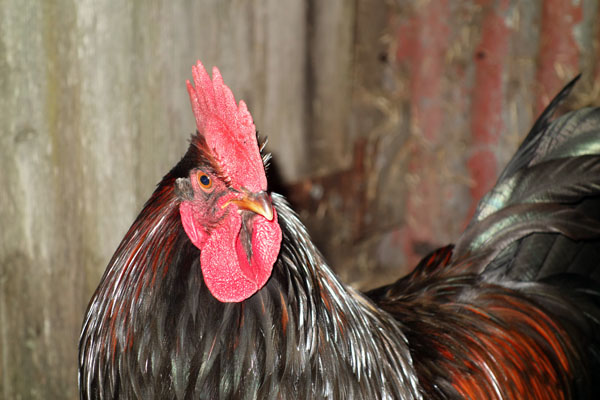 Now that we have passed the solstice and it’s all uphill from here, in a length of days kind of way, poultry activities have taken an upturn and its chicken time again. Even if I was innocent of all knowledge of the lengthening days, I would know that it is chicken time as people suddenly start calling and emailing me every day asking for birds and eggs.
Now that we have passed the solstice and it’s all uphill from here, in a length of days kind of way, poultry activities have taken an upturn and its chicken time again. Even if I was innocent of all knowledge of the lengthening days, I would know that it is chicken time as people suddenly start calling and emailing me every day asking for birds and eggs.
I start actually taking orders in August. In the mean time things are afoot for this year’s breeding season. Over winter all the ladies have been living in one big house with the oldest and most experienced bloke to keep them all safe. “Why one bloke?”, I hear you ask. The sad truth is that he was the only breeding cockerel from last year to survive the predations of Aquila audax fleayi, the Tasmanian wedge tail eagle. Fortunately(?) a pair of these endangered eagles successfully bred near us last year. Our property was in their hunting range… It was the first time I had ever lost adult cockerels due to predation. The even sadder part is that the eagles would sometimes kill, or fatally wound, birds and leave them there uneaten. It could be due to young ones learning to hunt and trying for things that are too big for them to carry yet. Or maybe they have only learned the killing bit and not the eating bit.
Anyway, long story short, last season was flaming death from above. All told about eight breeding birds bit the dust. One hen was a three time eagle attack survivor, by the second attack she was the only one not injured and was firmly in the chook house and wouldn’t come out for days. Clearly she had learned, and hopefully she will pass her lessons learned on to her chicks and flock mates this year. I remain committed to free range breeding, however it is hard to see predators take birds, especially when they don’t even have the decency to eat them.
The high level of predation last year can be put down to a couple of things, a good season for eagles and hawks and the fact that last year I built new chook houses that are much further from the house than the present ones. The eagles especially don’t like to come too close to the humans, hawks are a bit more used to humans and I did have one plucking chicks from a yard very near the house last year. I ended up making it fully enclosed as a result.
In more cheerful news last year’s young blokes have been growing out and showing their true colours. I have chosen three newcomers to be this year’s lucky winners; Forrest, Dan and Darkness.
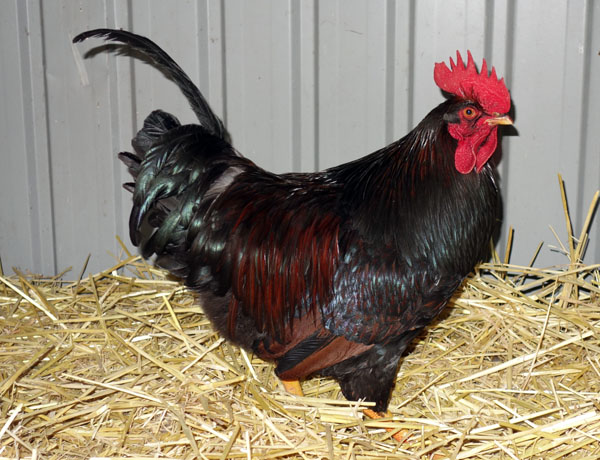
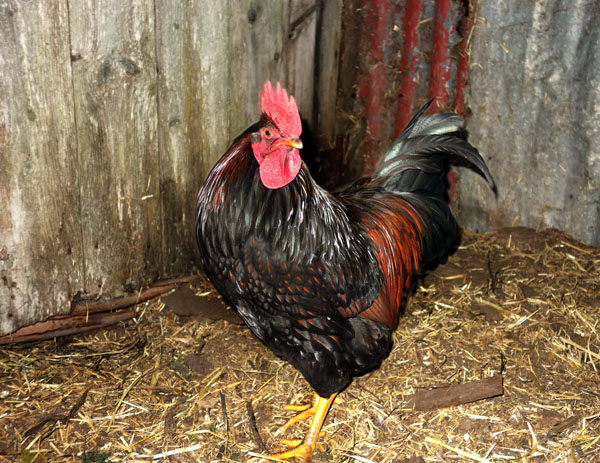
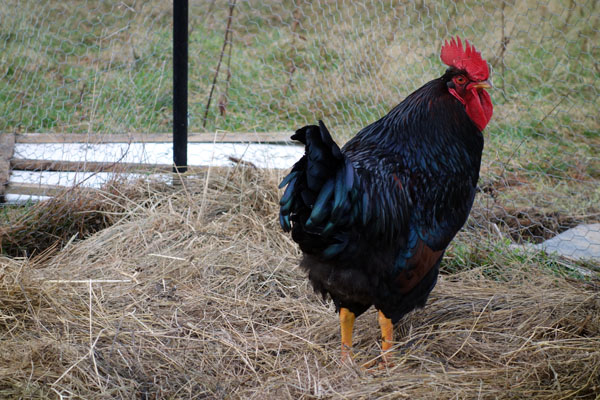
They were moved to their respective breeding sheds today. After they have had time to settle in there and make them their own, ladies will be joining them.
When I first moved to Tasmania I found that Barnevelders were quite inbred here and also had a trait I had not seen elsewhere. In any given hatch there would be a number of very light coloured chicks. Barnevelder chicks should be brown, with dark brown stripes. Here’s one I prepared earlier…
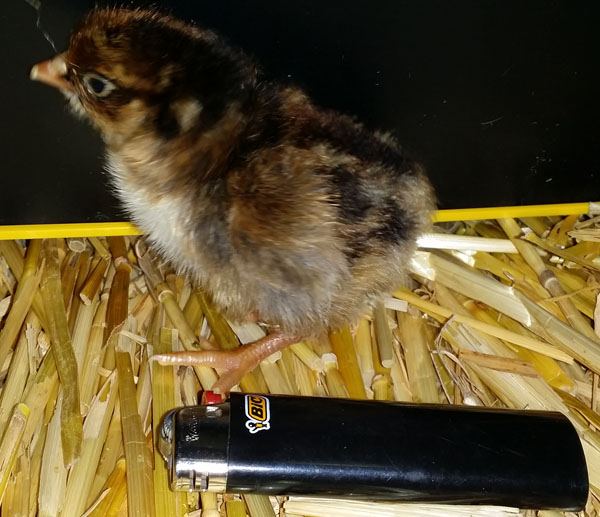
This is actually the smallest chick I ever hatched. Lighter for scale.
Somewhat undesirably the chicks were coming out like this. Some dark but many light.
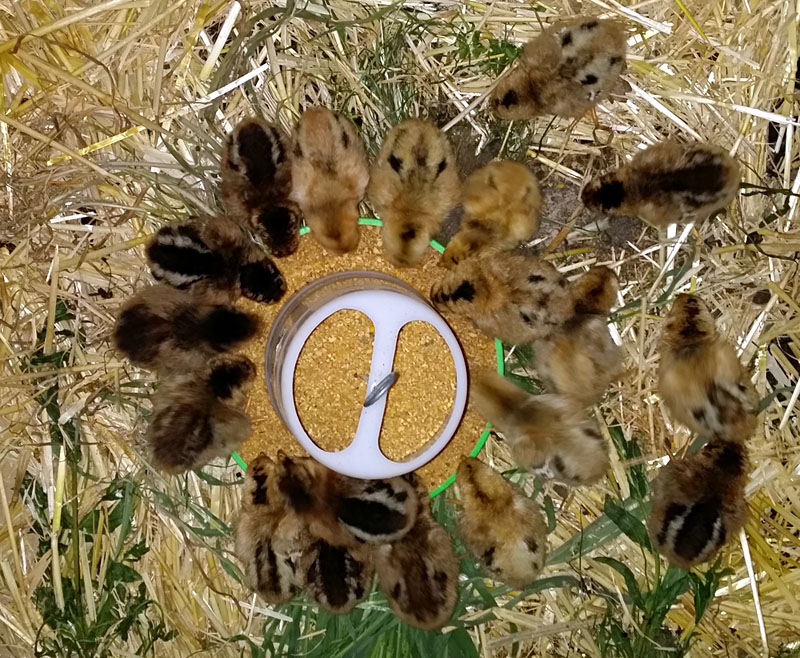
When these birds feather up as adults they all look like Barnevelders should. I suspect what has happened is that at some stage someone has crossed Barnevelders with something else in an effort to combat the kind of inbreeding that often happens in places with a small population of birds, like here is Tasmania. This is not an unreasonable approach if you don’t have any other options. However it is not optimal, so this year’s breeding is focusing on, among other things, elimination of these light coloured chicks. Last year I tagged all the brown chicks and it is from these that this year’s breeders have come.
Welcome to Down South Farm
I always find it strange writing the first post on a blog. It seems a bit like a pretense, “Here’s a blog, but it only has one post”. I do hope you will all bear with us while we get this blog together. We will be posting all kinds of stuff about chooks; feeding, breeding, incubation, health care, recipes, and anything else we can think of. There will also be information about the other things we do on our farm, all the other animals we keep, farm management and basically anything else that crosses our minds.
Many of you will no doubt however be most interested in buying birds. I know this as I have been inundated with enquiries about when they will be ready. I’d like to thank you all for your patience. The birds are now ready and you can place your order on the Chooks for Sale page. I must caution you all that the demand for birds greatly outstrips supply so everybody who has enquired is not going to get birds. Each year we breed more birds, and each year we are unable to satisfy demand. For this reason we have decided to limit each order to two pullets per customer so that more people will get birds. Don’t fret if you don’t get birds from this first release, there will be more birds available in about three weeks.
Many people ask me why I don’t take advance orders for birds. The answer is that I did that once before and it was very bad. Mostly for the very practical reason that one shouldn’t count one’s chickens before they hatch. If 20 eggs go in the incubator about 17 will hatch. Of those, some will be male and some female. I don’t know until the birds are twelve or so weeks old exactly how many of each sex I have. So taking advance orders is a guessing game at best and certain unhappiness at worst. I have had hatches that came out 75 per cent male! Because of this I have decided that the way to go is to just wait until the birds are totally sexable and offer them for sale then.
Below is a photo of one of our roosters, Ginger. Sadly he recently got another spin of the reincarnation wheel after he was bitten by a snake and came to a rather grisly end. He was a bit of a tail feather puller so the hens won’t miss him so much, and I certainly won’t miss his attacks. He got me a good one with a spur puncture wound to the calf just days before he died. He didn’t like me feeding his hens and would take any opportunity to send me a message via flying spurs. He also nearly beat his dad, Neo, to death a couple of months earlier. But, to be even handed about it, Neo had given him a couple of good beatings when he was younger so it was rooster payback. Ginger is now buried up on top of the hill in the Pet Sematary next to a cat named Chicken and a chicken named Lady.
If there are any topics that you would like us to write posts about please let us know and we will do our best to oblige.

